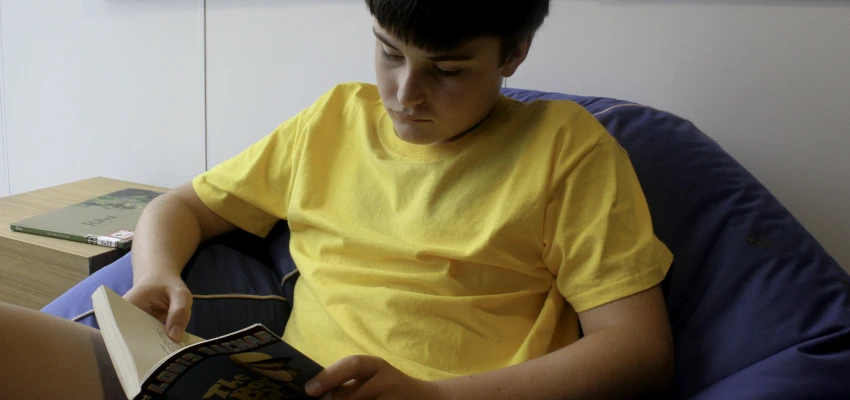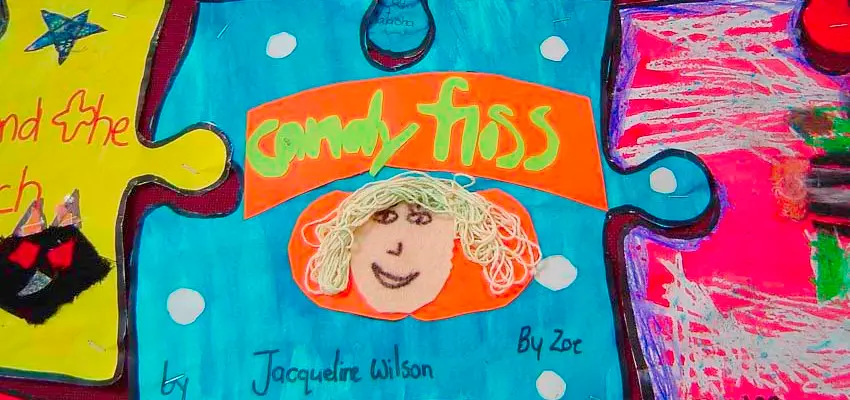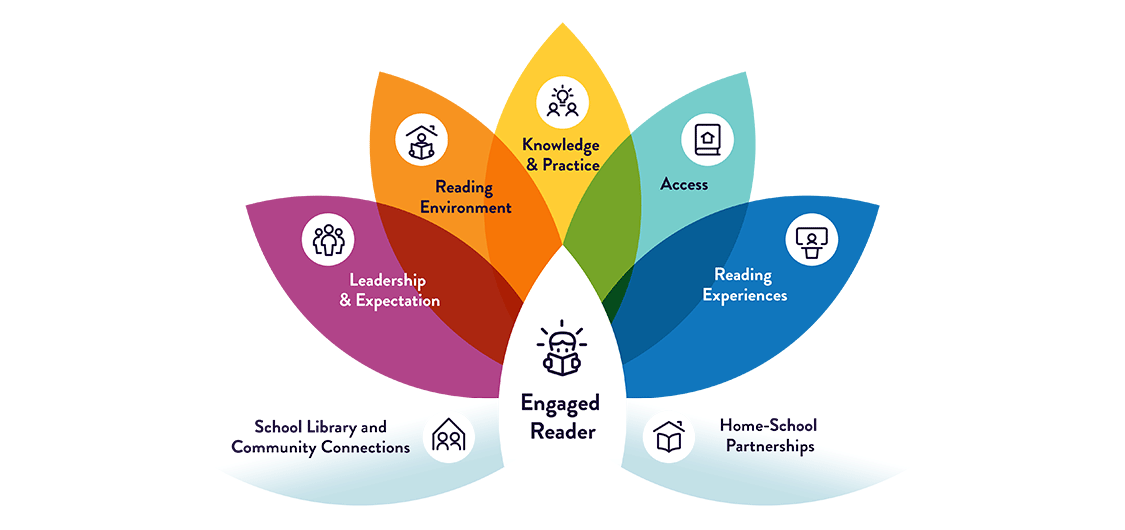Engaging teens with reading

Image credit: All rights reserved.
Teenagers' lives are increasingly digital. Reading for pleasure, especially long-form reading, competes with the compelling lure of social media, games and schoolwork for teen's time. Find inspiration and strategies to encourage teens to read for pleasure.
Why it’s important for teens to read
Schools aren’t just about teaching children to read, but teaching children to be social beings.
— Michael Rosen, 20-point plan for Reading for Pleasure
The New Zealand Council for Educational Research (NZCER) paper ‘Growing independence: A Summary of key findings from the Competent Learners @14 Project’ shows that teens who enjoy reading are more likely to succeed in school and in their engagement with their various communities.
Continuing the habit of reading, widely, into their teenage years helps teens to:
deal with their increasingly complex world and understand some of the adult issues they will have to grapple with
know they are not alone — others may be thinking and feeling the way they do
open lines of communication — especially if parents, teachers, librarians provide opportunities to discuss what teens are reading
share and see how others have found solutions to problems
develop their vocabulary
broaden their imaginations
improve their writing
deal with the increasing demands of schoolwork
gain confidence when speaking.
Growing independence: A summary of key findings from the Competent Learners @14 Project
What changes for teens
Changing reading habits
For teenagers, reading may take the form of print books, eBooks or articles online. But the ‘dopamine pull’ to check the latest from their social media feeds is strong.
It’s not surprising that research shows teens (and adults!) are reading fewer books than before. So, as the concept of reading broadens to encompass digital (which is often bite-sized), we also need to broaden teens' reading opportunities.
… what we need to do is not just honor all reading — as CSM suggests — but to keep offering new doors, new opportunities, and new options to teenagers. A graphic novel one day, a cool app the next, a novel on a third day, or a poem, a play, an investigative article, a description of a new discovery. The idea is to keep opening doors, so occasional readers recognize that there is something of interest — something appealing, stimulating, or unexpected — waiting for them when they do take time to read.
— Marc Aronson, Are teenagers reading less? Consider the source
Teens get less support to read for pleasure
The 2014 ‘English: Reading’ reports from the New Zealand National Monitoring Study of Student Achievement (NMSSA) showed students experience fewer opportunities and activities that promote reading for pleasure as they progress through school.
Australian researcher Margaret Merga also found that primary teachers encouraged reading for pleasure a lot more than secondary teachers.
Teachers and parents may inadvertently communicate to teens that reading is no longer important once they know how to do it. As children move from learning to read to reading to learn, once they have acquired independent reading skills, both parents and teachers may stop encouraging children to read for pleasure, known as expired expectations. Parents may assume they have played their part, and withdraw encouragement, while teachers may have also shifted their focus away from encouraging reading for pleasure. This leads to this encouragement becoming an orphaned responsibility …
— Margaret Merga, How to encourage teens to read
Teens need reading role models, time to choose reading material and time for sustained silent reading.
Teachers, library staff and families need to work together to engage each and every student with reading.
Understanding teen readers
What do teens read? Books they've chosen themselves
Scholastic’s ‘Kids and family reading report’ (2019) found one constant result over their 13 years of gathering data. When kids get to choose, they read.
The Australian Scholastic ‘Kids and family reading report’ (2016) found the following:
92% of 15 to 17-year-olds and 90% of 12 to 14-year-olds most enjoyed books they'd chosen for themselves. They are also much more likely to finish reading them.
Around 70% of teens would read more if they could find more books they liked.
12 to 17-year-olds want to read books that (in order of priority):
will make them laugh (54%)
let them use their imagination (47%)
have a mystery or problem to solve (42%)
have characters they wish they could be like (38%)
tell a made-up story (fiction) (36%)
teach them something new (35%)
let them forget about real life for a while (35%)
tell a true story (non-fiction) (32%)
are a little scary (28%)
are about things they experience in their life (24%)
have characters who are in love (18%)
have a character that looks like them (14%).
Australian kids and family reading report (pdf, 9.7 MB) — Scholastic Australia 2016.
Kids and family reading report (7th edition) — Scholastic 2019.
‘The potency of relevance’
We all read with ‘me’ in the background — how does what we read relate to our ‘self’?
Gibb and Guthrie (2008) call this the ‘potency of relevance’. They emphasise the need for teens to be able to make real-world connections with what they read. This is true no matter which delivery mechanism they use to read.
Rudine Sims Bishop wrote about the importance of providing ‘windows, mirrors, and sliding glass doors’. Books that open windows to other worlds ‘real or imagined’ and other people's lives and experiences. Or mirrors that reflect the readers' culture, religion, demographics, gender identity, disability, illness, background and more.
These windows are also sliding glass doors, and readers have only to walk through in imagination to become part of whatever world has been created or recreated by the author.
— Rudine Sims Bishop, Mirrors, windows and sliding glass doors
Mirrors windows and sliding glass door (YouTube video, 1:33) — a short video of Rudine Sims Bishop on the analogy of ‘mirrors, windows and sliding glass doors’. She uses this to ‘discuss the importance of diversity in books and the authors who write them’.
Strategies for the school or classroom library
Understand what motivates teens to read
To engage students with reading, it's helpful to understand the benefits, motivations and types of reading they engage with.
Everyone needs a reason to read. Consider if students read because they:
have to — for example, to answer an assignment
want to for pleasure and relaxation — because they are curious and interested in the subject or theme, to relax or to escape from the everyday
need to — where reading is like breathing for them.
Right books, right hands, right time, right reason
Understanding what motivates teens to read will help you put the right book in the right hands at the right time for the right reason.
Understand your own reading ‘identity’ — your reading habits and preferences, reading plans and motivations. This will help you support students to develop their own reading identity. And
know your students. This helps you help students choose books and reading that will fuel their interests.
Understand the importance of social influence and reading role models
Social influences from a range of different people are helpful to shape the attitudes of teens towards reading. Adolescents read more when they see friends and significant adults such as parents, teachers and coaches reading.
Role models are a key reference for them because they provide a window into the future. It's particularly powerful for boys to see adult males engaged in reading. Ideas could include:
organising ‘dads and lads’ sessions to help endorse the value of reading
arranging author and illustrator visits through ReadNZ or Storylines
getting reading champions (the captain or coach of sports, culture, arts groups) to inspire others
having guest speakers start or finish their presentations with some book chat
enlisting reading mentors to support other students.
Don’t underestimate peer validation of reading choices either. If you can tap into the current ‘cool’ books, you can add to students’ reading mileage with ease.
All help to consolidate a reading culture in the school.
Keep your finger on the teenage reading pulse
Teenagers place a lot of value on relationships, culture and peers. So, understanding the genres that appeal to teens right now is critical if you want to engage them in reading.
The trick is to provide easy access to an array of enticing material. Keep your finger on the teenage reading pulse by:
listening to students' recommendations
reading yourself
immersing yourself in the world of teen reads.
Provide a wide variety of accessible reading material. Publishers such as Barrington Stoke and Orca books produce stories of high interest and lower vocabulary. These are also helpful for engaging some reluctant readers.
Genres and forms for young adult and young fiction
Make time for social reading activities
Reading for many teens is a social act. Book clubs and casual conversations in person and online about reading experiences and recommendations build understanding and connections. These social activities are an important way of engaging teens with reading to help weave the fabric of a reading culture.
Social activities to consider include the following:
Look for opportunities to take part in reader responses. Examples include comments on blogs, and competitions on social media sites such as Goodreads.
Write stories and get feedback. Publish a chapter at a time and get reader feedback before writing the next chapter using online sites: Writing websites for students.
Explore fan-fiction sites. These are increasingly popular and provide a place for readers to write new derivative work based on favourite books. These works are then read and discussed by a community of readers.
Explore publishers' websites developed especially for teens and tweens. These have become flourishing communities where teens can read and contribute reviews, enter competitions and connect with a worldwide community of readers.
Set up or join book clubs — physical and virtual. These provide opportunities for readers to share ideas on books and reading.
Make time for independent reading
Schedule time for students to read books they have selected into their days. Regular daily sessions of sustained silent reading (SSR) builds the habit of reading.
Embracing the social aspect of independent reading — Edutopia.
Read aloud
Reading aloud to teens for pleasure — with no work attached — in classes across the curriculum is vital. It engages students with story and reading. And it gives students access to books they may not yet be able to read independently.
Make the library a social space for teens
To attract teens into the library and to encourage reading, libraries need to be social spaces. Along with relevant, diverse, and appealing fiction and non-fiction and magazines, offer:
sophisticated picture books
graphic novels
eBooks
computer and internet access
video games
databases e.g. EPIC
maker stations, craft, Lego stations
puzzles, board games
mix and mash equipment — such as video/audio/image editing stations.
Provide opportunities to promote and share what students are reading through social media, podcasts and social book-sharing sites. A popular activity is creating book trailers or having a book trailer competition, which you could display on your website or blog.
Access and time
Schools need to provide the resources and opportunities for students to engage with reading, such as:
generous opening hours for libraries
a mix of quiet, comfortable spaces with busy, social hubs that allow for different types of reading engagement
reader-friendly library policies, such as liberal borrower limits.
Include teens in collection development
Teens show greater motivation when they feel valued and competent. In a 2023 Mindshift article, librarian and teacher, Julia Torres insists we must authentically involve young people.
We cannot claim to serve young people while excluding them from conversations and decision-making about resources and materials that are primarily for their use.
So include students when you're developing your school and classroom libraries. For example, you could:
survey their interests
take current themes into account — vampires this year, future worlds the next
use media-derived material such as movie tie-ins
use social media to help with advisory (Booktok, Bookstagram).
Why student voice should be central to school libraries — Kara Newhouse, KQED MindShift.
More ideas to create a reading culture in teens’ lives
Here are some other ideas you might like to try in your school:
Don't do it alone! Pull in others who love to read, use a whole school approach.
Use all digital and social media tools possible.
Displays are an important way of luring teens towards books. Pinterest has some great collections of displays to inspire.
Young adult library displays on Pinterest
Teachers Creating Readers Framework — our Teachers Creating Readers Framework includes a range of strategies for engaging readers. You can also download and print posters of the framework.
Helping students choose books for reading pleasure
Evidence-based practice
Always remember to record what your actions were for any library or classroom initiative and track the outcomes. This creates evidence of practice — and probably some good stories as well. You can share these with senior leaders, the principal and even the Board of Trustees.
In a report on teenage reading in your school, consider:
what was the initial level of library use or reading engagement in the classroom?
what do the school's or your class reading scores show?
do your teenage students feel well served or not by the kinds of reading resources you offer?
Then outline:
what actions you took
those involved in the planning and implementation
what changes took place over a given time
what the results were.
Find out more
Find inspiration from the resources below.
Extra reading
Reading on-screen vs reading in print: What's the difference for learning? — our blog post that explores how reading online affects your students' learning.
Keeping teens reading — our blog post that looks into the changing reading habits of teens and strategies for helping develop the ‘will’ to read.
Literature ambassador Jason Reynolds knows young people have a story of their own — KQED MindShift interview highlights.
Paper books linked to stronger readers in an international study — KQED Mindshift article on report findings about physical books being more important than digital for raising strong readers.
Magpies: Talking About Books for Children — the Australian-published children’s literature journal has reviews, articles and author interviews.
Gibb, Robert L. & Guthrie, John T. (2008). Interest in reading: Potency of relevance. In Guthrie, John T, ed. Engaging adolescents in reading. Corwin Press.
Review sites and online communities
Books and Reads — for kids and teens — explore our Books and Reads tool to find and share children’s and YA books and reviews, and find reading communities.
#booktok — quick reviews and recommendations by readers on a range of genres.
Schoollib listserv — the School Library Association of New Zealand Aotearoa (SLANZA) has a lively online discussion forum for school librarians. Useful for discussion of suggestions for teen services.
Secondary English listserv — Te Kete Ipurangi (TKI) online discussion forum. Useful for resources and ideas for secondary classrooms.
Best young adult books — list as voted by Goodreads reviewers.
Related content

Children's and youth literature
Children’s and young adult (YA) literature is rich and diverse, spanning multiple formats and genre. Increase your knowledge and understanding of the literature, and discover strategies to evaluate and promote it to engage students in reading.
A school reading community
Effective school reading communities inspire and support students to read for pleasure. Use the School Reading Community Framework and watch a video to get strategies for creating a reading community.